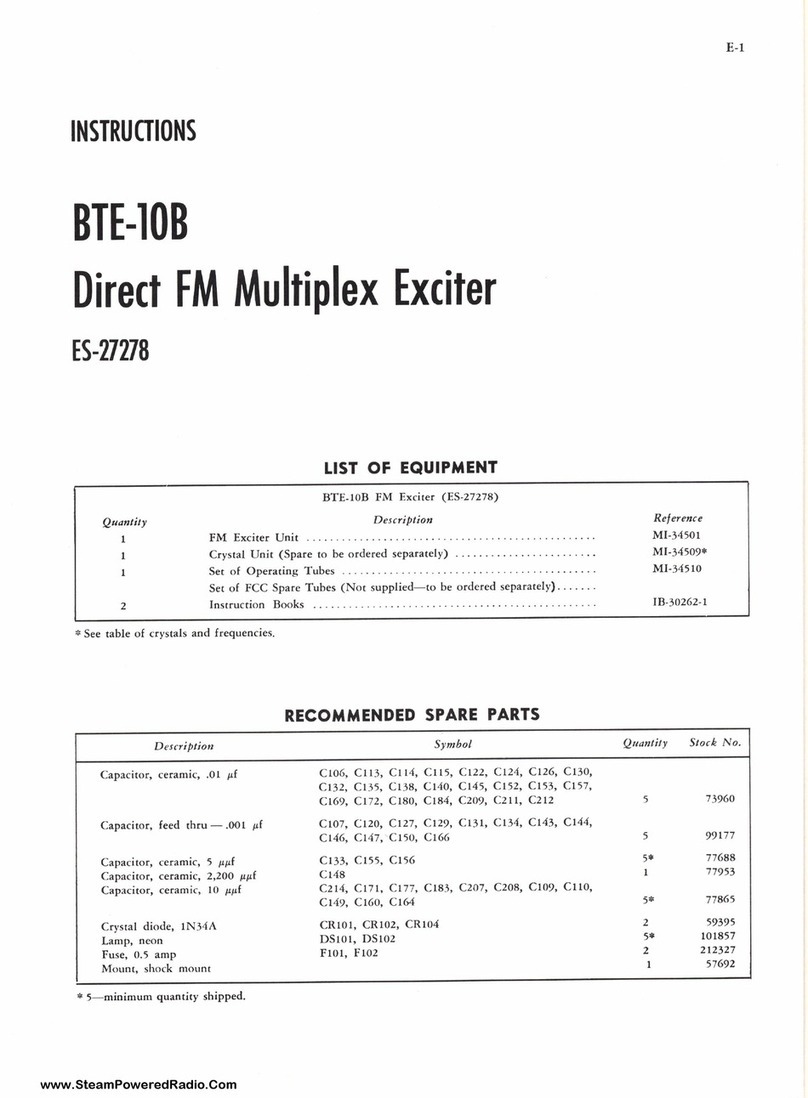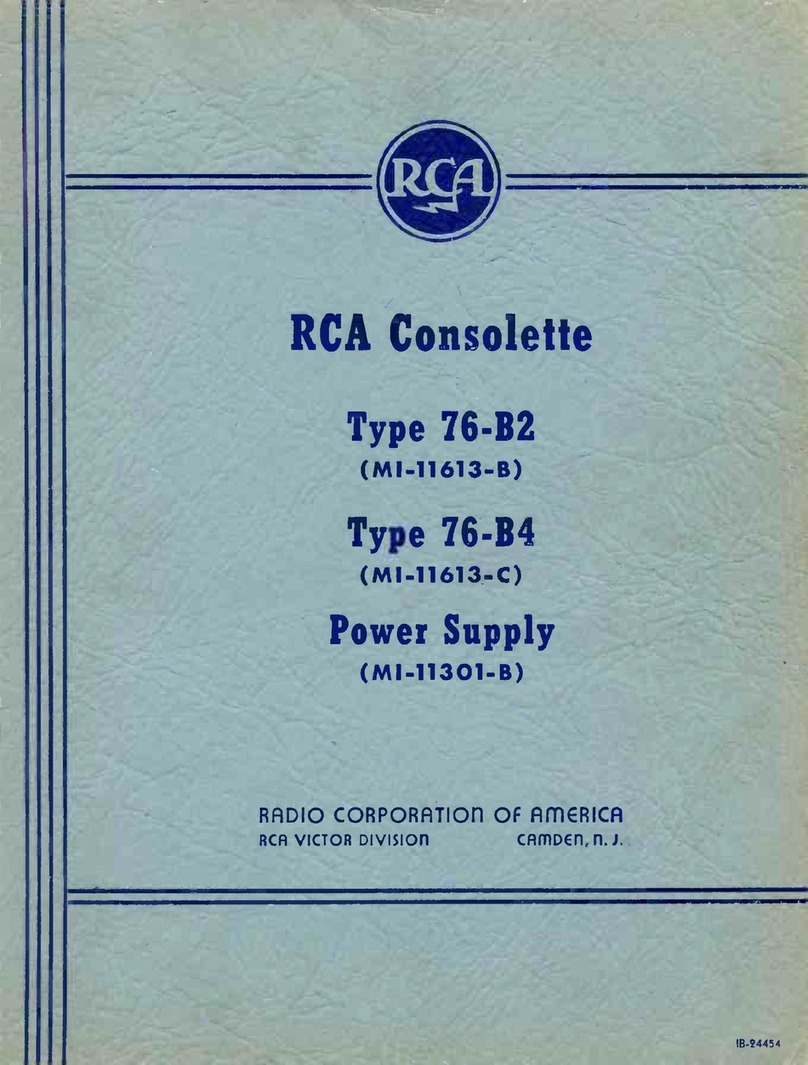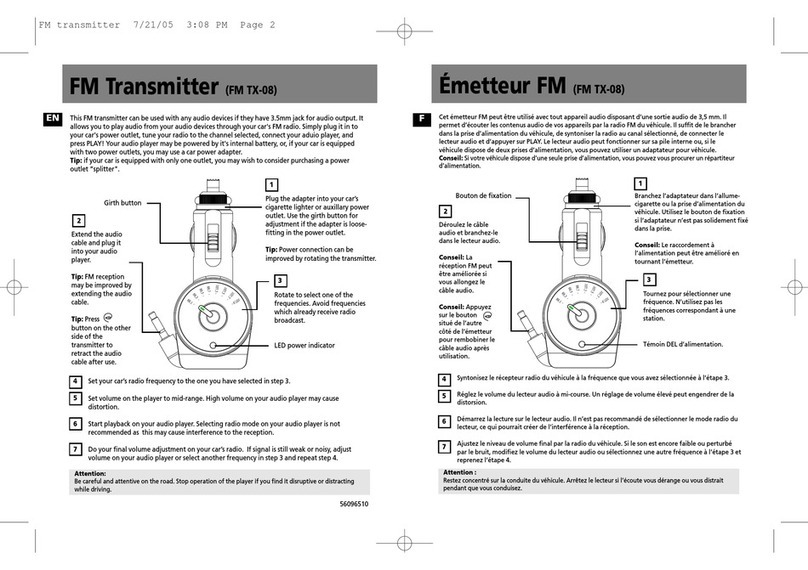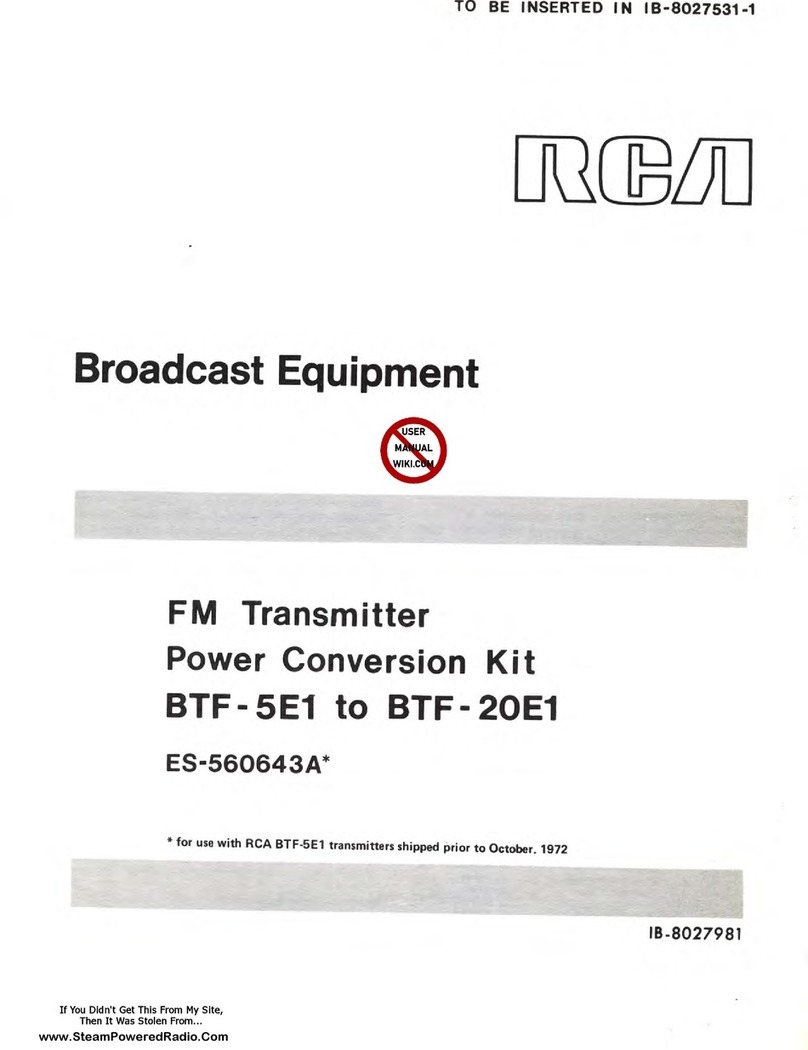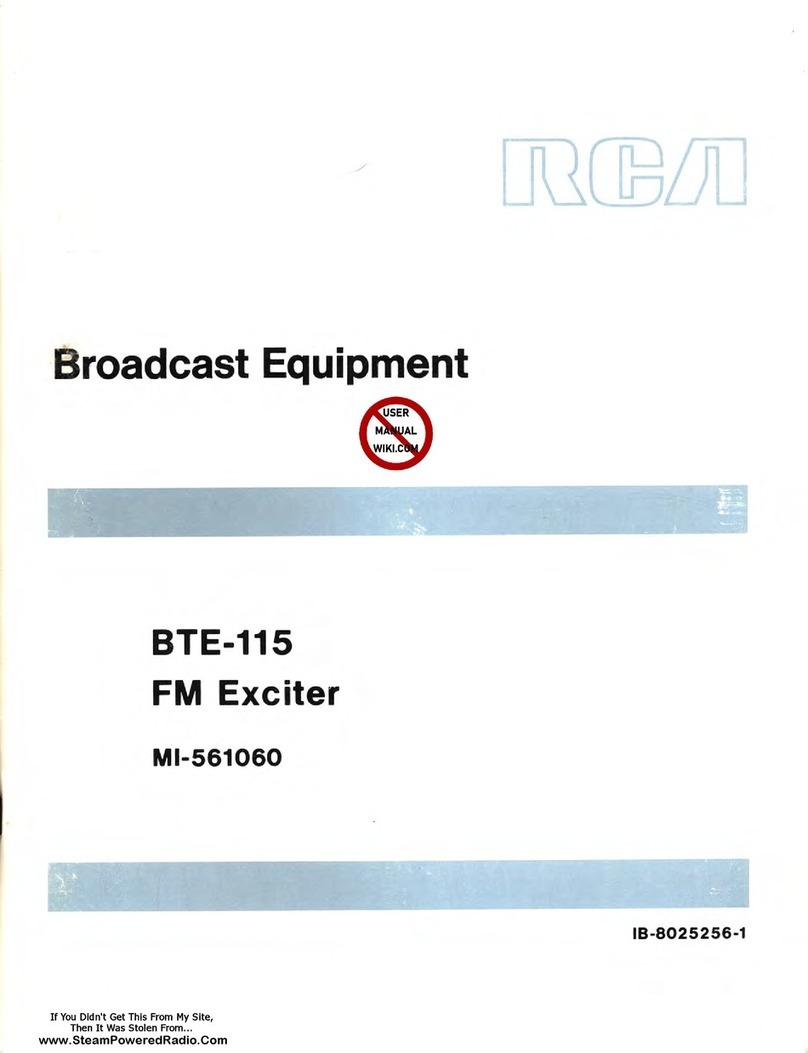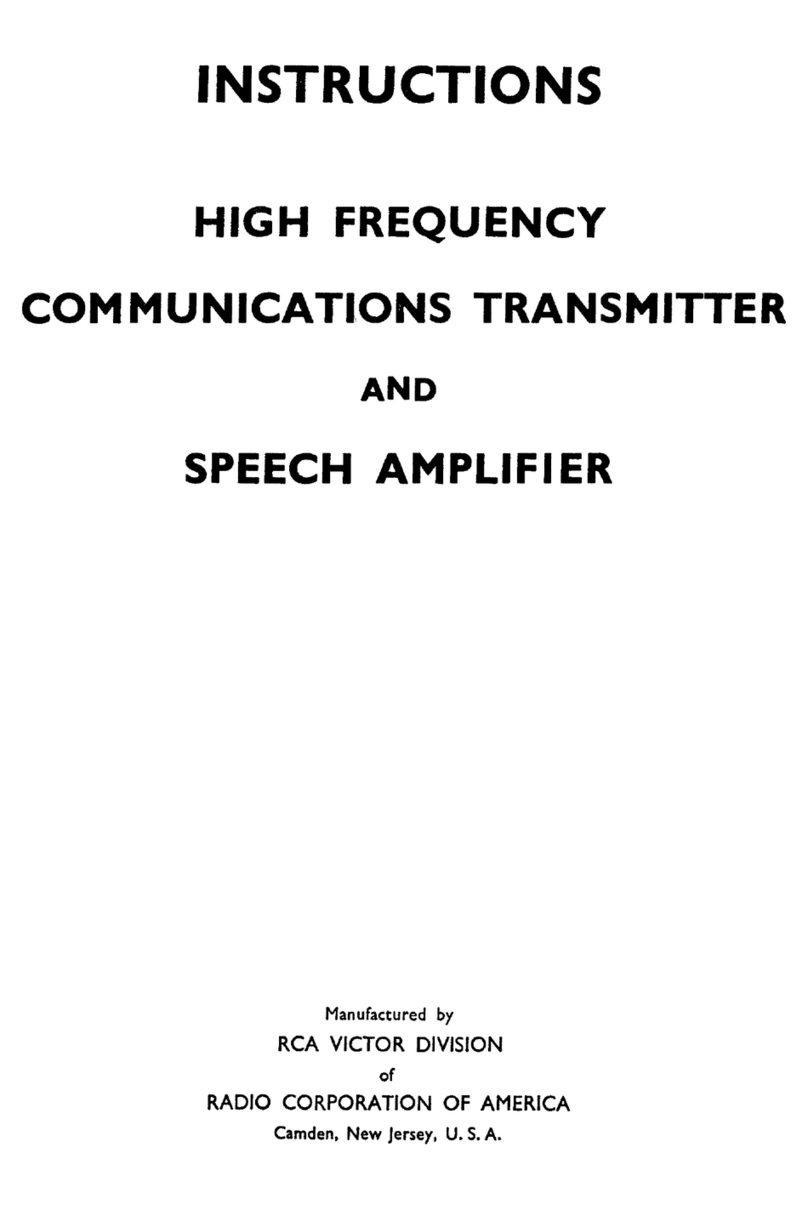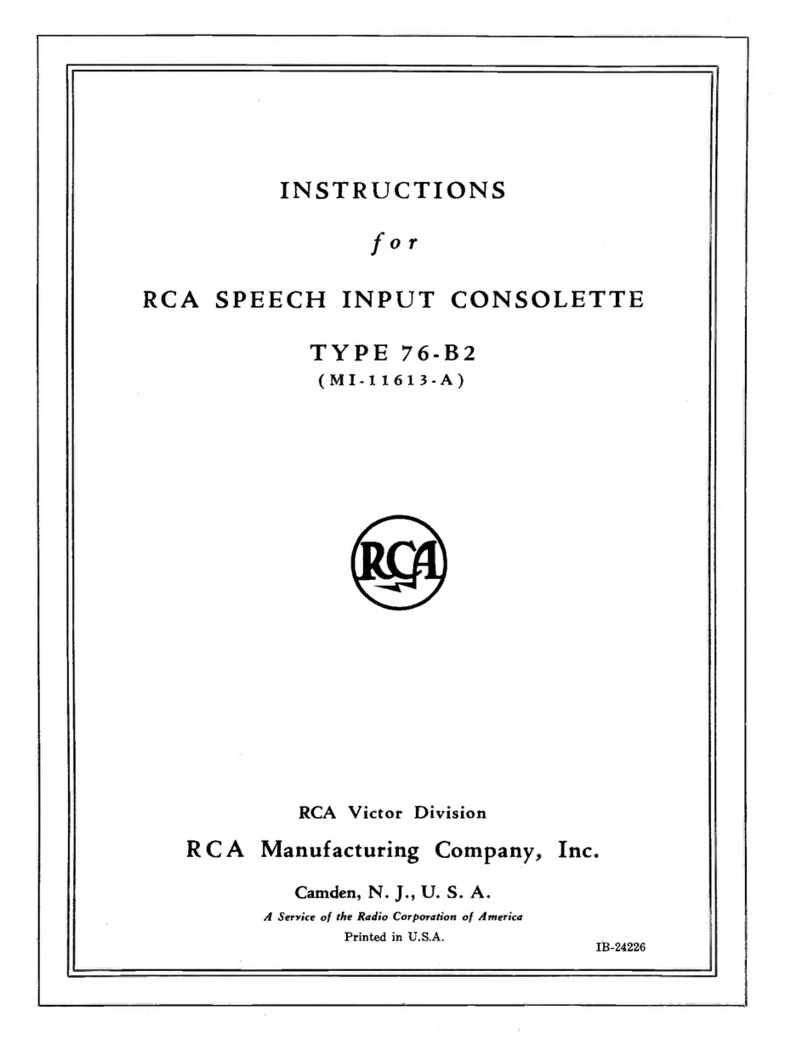
DESCRIPTION
The Type BTA-250M Broadcast Transmitter is
a complete, self-contained unit that provides a
power output of 250 watts at any frequency in the
535 to 1620 kilocycle range. Mounted in a single
RCA Type BR-84 steel cabinet, as shown in Figure
1, the unit utilizes a temperature-controlled crystal
for close regulation of the operating frequency.
All operating controls are accessible from the
front of the panel through the access openings pro-
vided; meters are mounted above the hinged front
door. A power source of 1 17 volts, 50/60 cycles,
single phase capable of supplying approximately
1,450 watts is required for the transmitter.
A crystal oscillator, buffer-driver, and power-
amplifier comprise the r-f portion of the transmitter.
Referring to the schematic diagram, Figure 12,
capacitor Cl is used for adjusting the oscillator fre-
quency within narrow limits, and is the only variable
tuning element in this stage. Pilot lamp I1 0 1 serves
to indicate when the crystal heater is energized,
while an extra socket, Xl 10, provides means for
storing a spare crystal. The spare crystal heater is
energized at all times, permitting instant substitution
of the spare for the operating crystal.
An RCA type 807 tube is used in the buffer-
driver stage, V 10 1. The plate circuit is shunt fed
through coil L 10 1. Taps on L 10 1 enable the buffer-
driver stage to be adjusted for optimum output over
a wide frequency range.
The power amplifier is a plate-modulated Class
“C” amplifier which uses two RCA type 8 13 tubes
connected in parallel. The low-pass “T” filter used
as output in this stage serves to match the high plate
impedance to the low antenna impedance as well
as acting to reduce harmonic radiation. Since screen
grid tubes are employed, neutralization of the PA
stage is not required.
Two push-pull stages comprise the transmitter
audio system. The two type 807 tubes in the first
stage operate Class “A” whi1.e the modulator uses
two type 8 13 tubes as a Class “AB,” amplifier. To
reduce distortion, approximately 14 db of negative
feedback is used on the input stage. The tapped
secondary of modulation transformer T102 makes
it possible to modulate the screen of the buffer-
driver, Vi0 1, as well as the screens and plates of
PA tubes VI02 and VlO3.
Potentiometers R155, R 158, and R 159 provide
means for maintaining the overall hum at minimum
level.
D-c supply for the transmitter is furnished by
two rectifiers. High-voltage for the modulator
plates and the PA screens and plates is supplied
by two type 866A mercury vapor tubes, V108
and V109, functioning as a single-phase full-wave
rectifier.. Selenium rectifiers SRI 02 to SRI 07 also
are connected in a full-wave rectifying circuit to
furnish approximately 750 volts for the type 80 7
tubes and a negative 200 volts for modulator bias.
Power to the transmitter is fed through the main
circuit breaker Sl 0 1, the trip coils of which are con-
nected in the filament circuit. Thus a filament over-
load would remove all power from the transmitter.
Control of filament voltage is provided by rheostat
R 149, in conjunction with meter rectifier SR 10 1 and
meter M 104. Pilot light I1 02 serves to indicate
the status of the filament circuit.
When filament power is applied by the closing of
S 10 1, time delay relay K 10 1 is energized. Relay
K 10 1 closes in ‘approximately 30 seconds de-ener-
gizing the trip coil of plate breaker S104. Plate
power may then be applied manually by closing
S 104, energizing the rectifier plate circuits.
Circuit breakers S 102 and S 103 are connected in
the cathode circuits of the modulator and power
amplifier, respectively, protecting these stages in
case of overload.
Milliammeter M 104 and selector switch S 105 pro-
vides facilities for checking all stages in the trans-
mitter. Switch positions along with the various
circuits involved are listed in Table 3, under IN-
STALLATION.
For frequency monitoring, receptacle J 10 1, con-
nected to the cathode of buffer-amplifier V 10 1, pro-
vides means for sampling the voltage at this point.
Output, approximately ten volts at approximately
75 ohms impedance, may be varied by potenti-
ometer Rl 12.
R-f output for modulation monitoring is obtained
from transformer T103 which is connected to
J102.
Output of this circuit is designed to supply approxi-
mately ten volts at approximately 75 ohms imped-
ance. Taps on the secondary of T103 provide
means for adjusting the secondary voltage.






